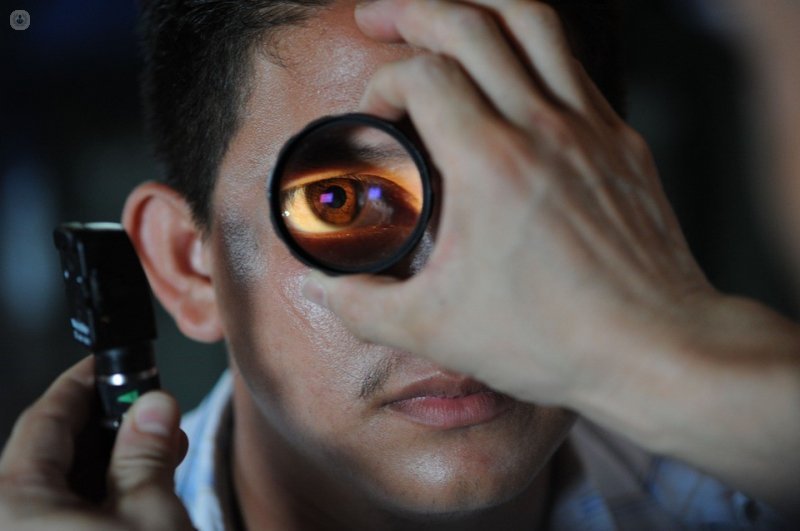What is a detached retina and how does it happen?
Written by:The retina is the light sensitive layer of the eye. In short sighted/myopic people, fluid from the vitreous gel leaks through small holes in the retina and the retina separates and detaches. More commonly, the vitreous gel liquefies and collapses inside the eyeball. The gel collapse results in tears to the retina, and the fluid from the vitreous then flows under the retina and causes the retinal detachment. This condition can happen at any age, and is more common after cataract surgery.
Consultant ophthalmologist Mr Mahi Muqit explains the condition, including symptoms, treatment and recovery.

What are the symptoms?
"Flashes of light" signify retinal traction and retinal tears, "floaters" (dots of light which drift through your field of vision) signify collapse of the vitreous gel, and a "fixed shadow or dark curtain in the vision" signifies a detached retina. Any of these symptoms could signal the onset of retinal detachment so they require assessment by a retinal surgeon.
How is it treated?
Vitrectomy surgery is the commonly used intraocular procedure for a detached retina, it involves using laser surgery/cryotherapy to seal the tear, and an injected gas bubble, to keep the retina attached after surgery. In 10% of patients, a buckling technique with cryotherapy can be used and this avoids the need for a gas bubble and prevents the risk of cataract complications
Retinal detachment surgery is most effective when the condition is treated early. If the central part of the retina known as the "macula" detaches then the vision will take longer to recover. Early assessment could mean the retinal detachment is diagnosed before the macula detaches, and this means vision can be saved.
How is the treatment recovery/how long does it last?
Patients will have a red eye for 7-10 days after the detached retina surgery, and are given eyedrops for 4 weeks. Patients will require to position their head in particular way, known as "posturing." A short acting gas bubble lasts 3 weeks, and a longer-acting gas bubble lasts 8 weeks. Patients cannot fly when there is a gas bubble in the eye. The vision is blurred at hand motions for around 2 weeks as the patient is viewing through a gas bubble. After 2 weeks, vision improves. Patients can return to work after 2 weeks, and drive if comfortable after 2-3 weeks.
Are there any new relevant procedures/treatments you would like to highlight?
Minimally-invasive small gauge vitrectomy surgery (25g and 27g) means sutures are rarely required for surgery, and the recovery after surgery is much faster. Vitrectomy surgery for a detached retina takes 30mins and is pain-free. A consultant anaesthetist delivers a local anaesthetic, and patients can feel more relaxed with sedation that is given by the anaesthetist.


